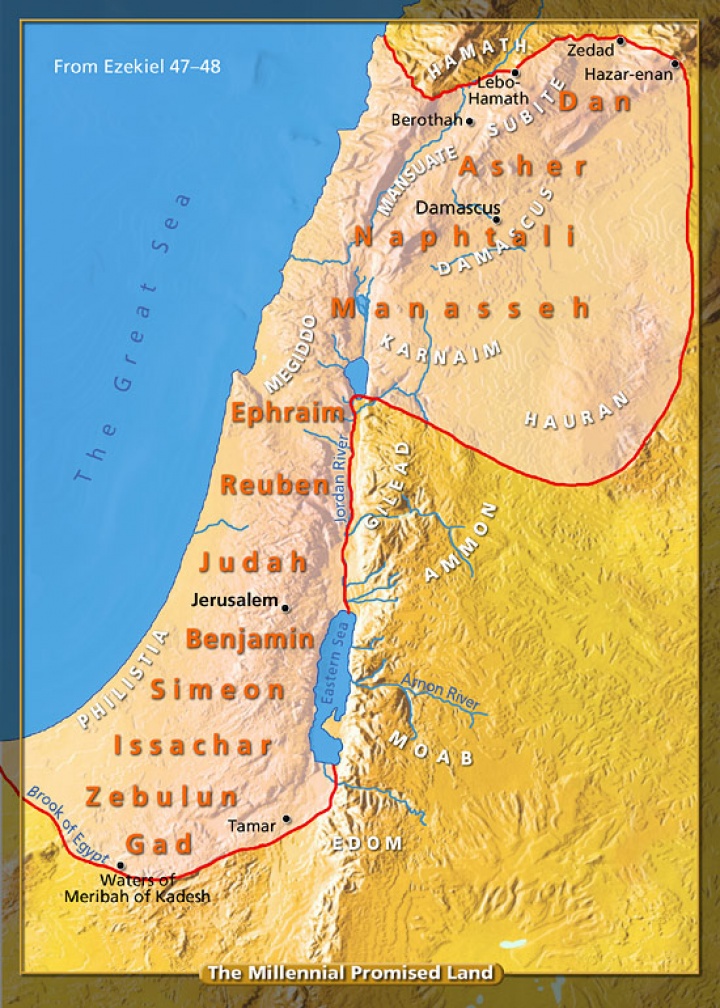Bible Commentary
Ezekiel 48
The Division of the Land
 UCG.org
UCG.org
Although Ezekiel is given a list of the tribes who receive their inheritance, elsewhere he says they would receive it by lot (Ezekiel 47:22), probably referring to the distribution of the land within each tribe. God says Joseph is to receive two portions (Ezekiel 47:13), to keep the number of inheriting tribes at 12, even though Levi is not to receive a normal inheritance. As shown on the accompanying map, seven of the tribes are given land north of the temple while the remaining five tribes are south of it.
Between Judah on the north and Benjamin on the south is the 25,000-cubit- (10-mile-) wide strip of land we first saw in chapter 45, apparently stretching all the way from the Mediterranean Sea to the Jordan River/Dead Sea border. The east and west portions of this strip are for the prince. But in the middle is the capital district, which is also 25,000 cubits long to form a square. All but a 5,000-cubit (2-mile) strip of this land is given to the priests and Levites, for their homes and towns and for the temple complex. But this chapter goes into a little more detail about the capital city itself, which will be located about three miles south of the temple complex, in this remaining 2 x 10-mile piece of land. That would put it about a mile northeast of Bethlehem.
The capital city occupies a 2 x 2-mile square in the center of the strip. The sides of the city proper are given as 4,500 cubits, surrounded by a 250-cubit easement (verses 16-17). This leaves two 2 x 4-mile stretches of land on either side of the city, described as the farmland for the workers of the city to grow their own food (verse 18-19). Inhabitants come from every tribe (verse 19). Three gates are on each of the four sides of the city, each one named for a different tribe (this time Joseph only receiving one gate). The New Jerusalem, beyond the Millennium, will have gates of pearl, precious foundation stones bearing the names of the 12 apostles and streets of gold (Revelation 12:12-21). Perhaps some of these features will be incorporated in the millennial Jerusalem as well.
Throughout these chapters, Ezekiel never actually mentions the name "Jerusalem." Other passages seem to indicate the area will still be called by its ancient name (e.g., Zechariah 14), but Ezekiel says it will receive another name at this time: Yhwh Shammah in Hebrew. This incredible name, meaning "The Lord Is There," implies that God is watching over this city to protect and bless it (compare Ezekiel 35:10 with Isaiah 33:20-21; see also Jeremiah 3:17).
While this concludes Ezekiel's grand vision of the future and provides a wonderful conclusion to his book, God gave him two last messages to record after this, as we will see in our next reading.
